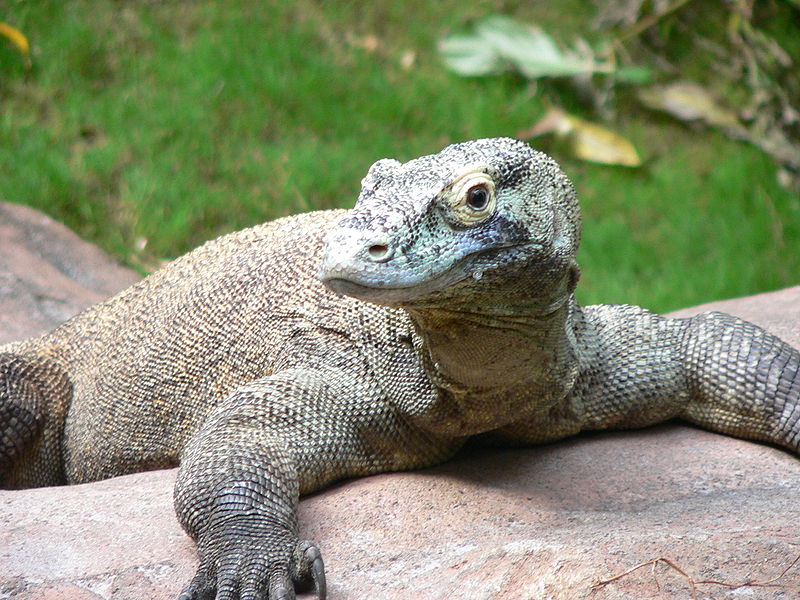They seem like the stuff of fairytales or maybe nightmares, but Komodo dragons are the closest things we have to real, man-eating dragons. At three metres long, these lizards that live on the Indonesian island of Komodo and are fearsome enough, and now scientists have discovered that they have a toxic bite. Until now it was thought that the key to their deadly bite was bacteria in their saliva which infects their prey, causing them to go into shock before the dragon returns to kill and eat their victim.
 But now, Stephen Wroe from the University of New South Wales, Australia and a big international team of researchers publishing in the journal PNAS have discovered that Komodo dragons have venom glands containing a dose of anticoagulant toxin that causes their victims to bleed to death.
But now, Stephen Wroe from the University of New South Wales, Australia and a big international team of researchers publishing in the journal PNAS have discovered that Komodo dragons have venom glands containing a dose of anticoagulant toxin that causes their victims to bleed to death.
First the team used computer models to analyse the skull of Komodo dragons and found that they have a much weaker bite than crocodiles of a similar size suggesting that instead of biting down hard they are better suited to holding onto prey that is trying to wriggle away. The team then put a preserved head of a komodo dragon into a magnetic resonance scanner and discovered a set of complex venom glands in its jaw with ducts coming out of their teeth.
The researchers surgically removed a set of these glands from a terminally ill dragon in a zoo. Using mass spectrometry they worked out the chemical make up of the venom and discovered it is made up of a complex mix of proteins, similar the lethal cocktails used by other venomous reptiles.
These toxins induce shock in victims causing them to bleed copiously by preventing blood clotting and widening blood vessels. That finding fits with reports from humans who have been bitten by Komodo dragons and continued to bleed for a long time afterwards.
The researchers also examined the fossil teeth of an extinct relative of the Komodo dragon, called Megalania, and discovered that this two tonne, seven-metre giant probably also had venom glands, making it one of the largest venomous animals ever known. But don't worry, these monstrous lizards haven't been around now for 40,000 years although their smaller cousins the Komodo dragons are undoubtedly impressive predators and now we have a much better idea of how they deal their lethal blows.










Comments
Add a comment